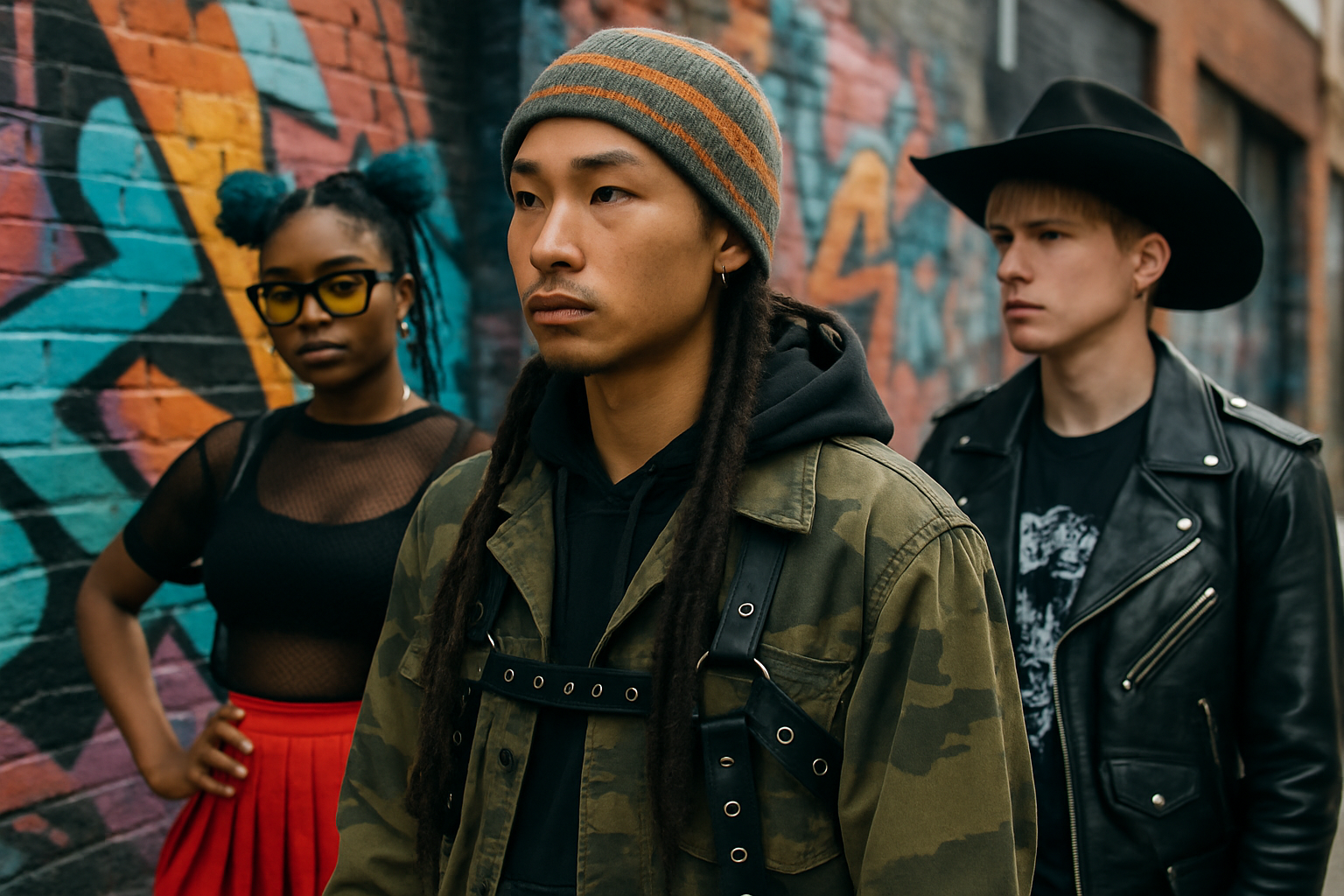Subculture Fusion: The Emergence of Hybrid Urban Tribes
In an era of unprecedented global connectivity, a fascinating sociological phenomenon is reshaping urban landscapes worldwide. Traditional subcultures are blending, morphing, and giving birth to entirely new hybrid identities. This fusion of styles, beliefs, and practices is creating richly diverse urban tribes that defy conventional categorization. Read below to explore the captivating world of subculture fusion and its profound impact on modern society.

The Catalysts of Convergence
The fusion of subcultures can be attributed to several key factors. First and foremost is the digital revolution, which has broken down geographical barriers and exposed individuals to a vast array of cultural influences. Social media platforms have become virtual crossroads where diverse subcultures intersect, share ideas, and inspire one another. This constant exchange of information has led to a more fluid and adaptable approach to personal identity.
Globalization has also played a crucial role in this convergence. As cities become increasingly multicultural, young people are exposed to a wider range of cultural practices and traditions. This exposure often leads to the adoption and adaptation of elements from various subcultures, creating unique hybrid identities that reflect the complexity of modern urban life.
The Anatomy of Hybrid Tribes
Hybrid urban tribes are characterized by their fluidity and resistance to rigid categorization. Unlike traditional subcultures, which often adhered to strict codes of dress and behavior, these new tribes are more flexible and inclusive. Members may draw inspiration from multiple sources, creating a personal style that is both eclectic and deeply meaningful.
One example of this phenomenon is the rise of eco-punk, a subculture that combines elements of environmentalism with the DIY ethos of punk rock. Eco-punks might sport mohawks made from recycled materials or wear studded jackets crafted from upcycled fabrics. Their music often blends punk’s raw energy with lyrics focused on environmental issues, creating a unique sound that reflects their hybrid identity.
The Impact on Fashion and Art
The fashion industry has been quick to recognize and capitalize on the trend of subculture fusion. Designers are increasingly creating collections that blend elements from diverse style tribes, resulting in innovative and often surprising combinations. Streetwear, for instance, now regularly incorporates influences from high fashion, skate culture, and even traditional cultural dress.
In the art world, hybrid subcultures are inspiring new forms of expression that defy easy categorization. Street artists are collaborating with classical musicians, while digital artists are drawing inspiration from ancient folk traditions. This cross-pollination of ideas is leading to a renaissance in urban creativity, with cities around the world becoming living canvases for these new hybrid art forms.
Social Implications of Subculture Fusion
The rise of hybrid urban tribes has significant implications for social dynamics and identity politics. Traditional notions of belonging and group identity are being challenged as individuals increasingly resist being pigeonholed into a single subculture. This fluidity can lead to greater social cohesion, as the boundaries between different groups become more permeable.
However, it also raises questions about authenticity and cultural appropriation. As elements of various subcultures are adopted and adapted, there is ongoing debate about who has the right to claim certain cultural practices or styles. This tension has led to important conversations about respect, recognition, and the evolving nature of cultural identity in a globalized world.
The Future of Urban Tribes
As technology continues to advance and global connections deepen, the trend of subculture fusion is likely to accelerate. We may see the emergence of even more complex and nuanced hybrid identities, each reflecting the unique experiences and influences of its members. This evolution challenges sociologists and cultural theorists to develop new frameworks for understanding group dynamics and identity formation in the urban context.
The fusion of subcultures represents a powerful force for innovation and creativity in our cities. It encourages individuals to think beyond traditional boundaries and explore new ways of expressing themselves. As these hybrid urban tribes continue to evolve, they will undoubtedly play a crucial role in shaping the cultural landscapes of the future, creating vibrant, diverse, and endlessly fascinating urban environments.





